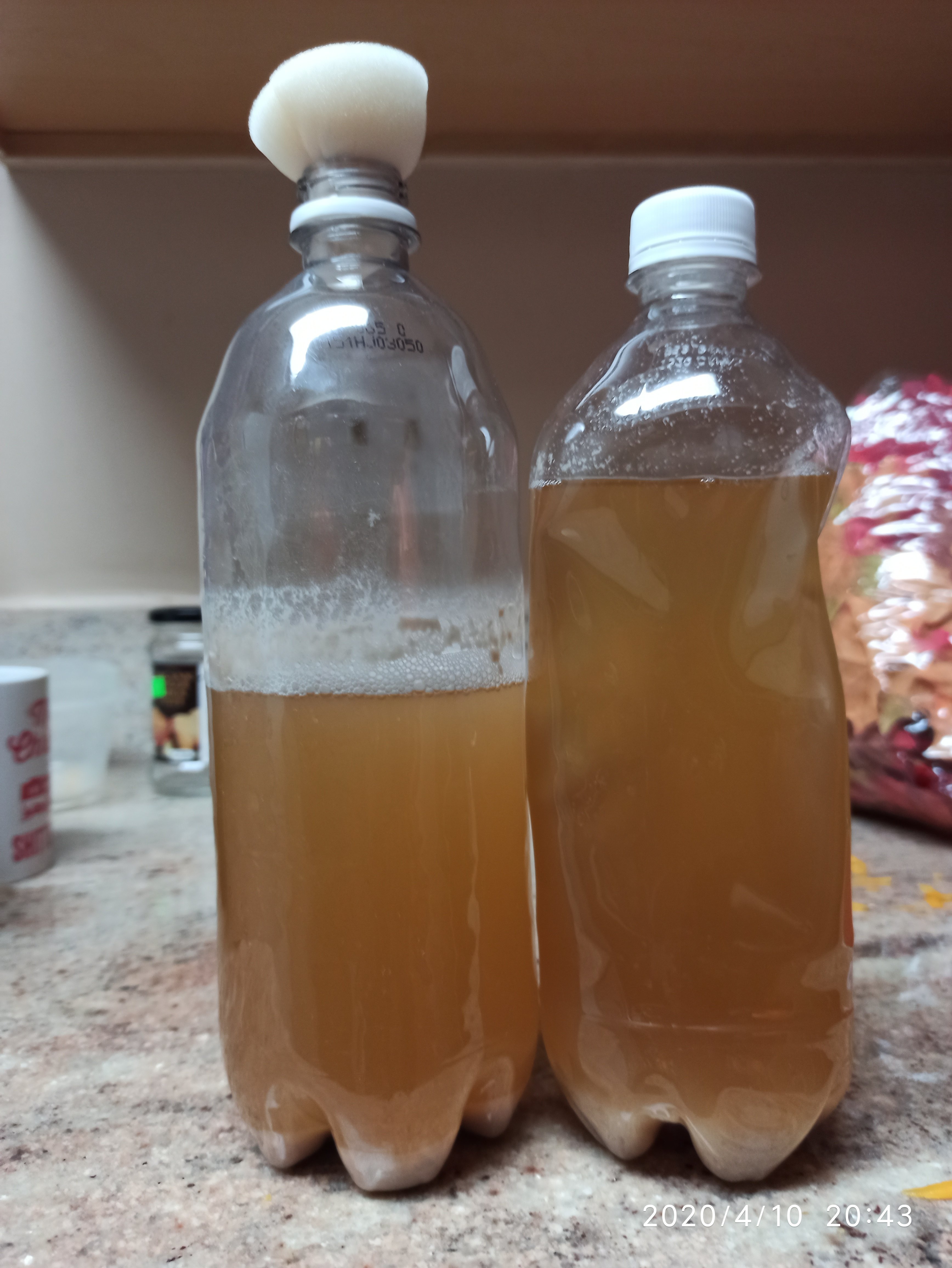AnbyG
Well-Known Member
Hi everybody,
So last Sunday I tried my hands in preparing/propagating a yeast starter, primarily to avoid having to shell out out ~ $8 bucks for liquid yeast packs. In December I had purchased a packet of WLP 400, which was accidentally left in room temperature for 4-5 days and best use expiry date in late Feb. The idea was to pitch this entire (almost) packet of yeast in the 5.5 gallon batch of Belgian wheat beer. And a couple of drops from the WLP 400 packet was to go in yeast starter media in bottles to grow yeast for another batch.
So I boiled ~125 g dry pilsner malt extract in approximately 1L water (final volume), put it in two sanitized plastic bottles (did not have time to buy & ship magnetic stir plate & Eylenmeyer flask on time), cooled them down to room temp, pitched the yeast in one bottle and capped them up. Right after I pitched the yeast I noticed sediments at the bottom of the bottles, which must have precipitated after the cool down. A few days after pitching, I tried to swirl/shake the bottles to dissolve it back as some of the nutrients have been eaten by the yeast, but it did not work.
The left bottle is the one with yeast in it, and the one on the right is the spare bottle. In hindsight, I should have bought smaller foam plugs as it is probably restricting gas exchange. What can I do to dissolve it back and to separate the yeast from the precipitated media?
Thanks
AnbyG

So last Sunday I tried my hands in preparing/propagating a yeast starter, primarily to avoid having to shell out out ~ $8 bucks for liquid yeast packs. In December I had purchased a packet of WLP 400, which was accidentally left in room temperature for 4-5 days and best use expiry date in late Feb. The idea was to pitch this entire (almost) packet of yeast in the 5.5 gallon batch of Belgian wheat beer. And a couple of drops from the WLP 400 packet was to go in yeast starter media in bottles to grow yeast for another batch.
So I boiled ~125 g dry pilsner malt extract in approximately 1L water (final volume), put it in two sanitized plastic bottles (did not have time to buy & ship magnetic stir plate & Eylenmeyer flask on time), cooled them down to room temp, pitched the yeast in one bottle and capped them up. Right after I pitched the yeast I noticed sediments at the bottom of the bottles, which must have precipitated after the cool down. A few days after pitching, I tried to swirl/shake the bottles to dissolve it back as some of the nutrients have been eaten by the yeast, but it did not work.
The left bottle is the one with yeast in it, and the one on the right is the spare bottle. In hindsight, I should have bought smaller foam plugs as it is probably restricting gas exchange. What can I do to dissolve it back and to separate the yeast from the precipitated media?
Thanks
AnbyG


















![Craft A Brew - Safale S-04 Dry Yeast - Fermentis - English Ale Dry Yeast - For English and American Ales and Hard Apple Ciders - Ingredients for Home Brewing - Beer Making Supplies - [1 Pack]](https://m.media-amazon.com/images/I/41fVGNh6JfL._SL500_.jpg)






































